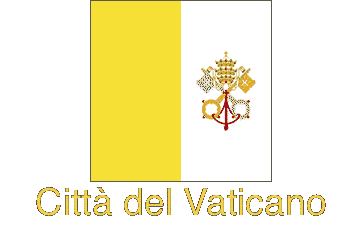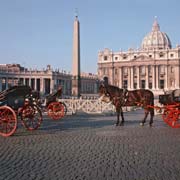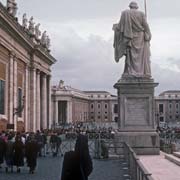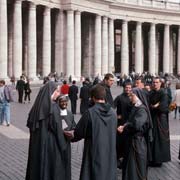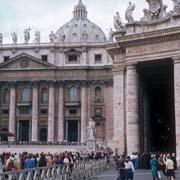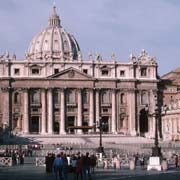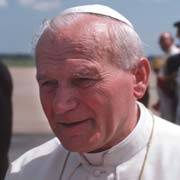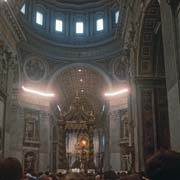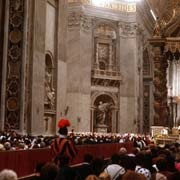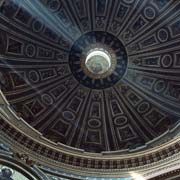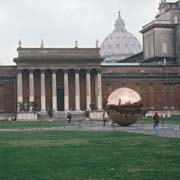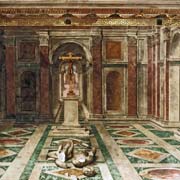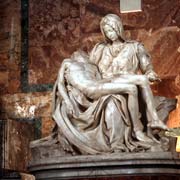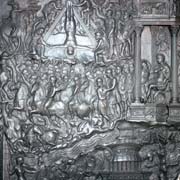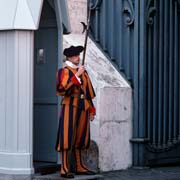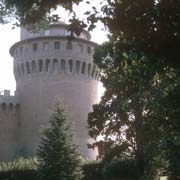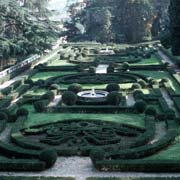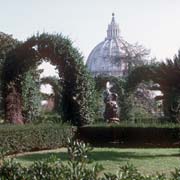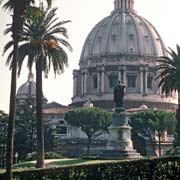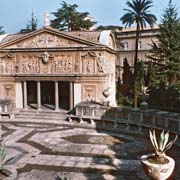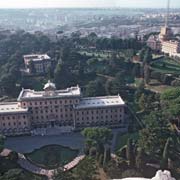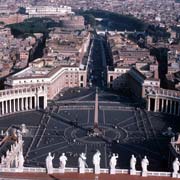Photos of Vatican City, the Vatican
Vatican City
Vatican City is the smallest independent country in the world and occupies 0.44 km² or 44 hectares on Vatican Hill within the Italian capital city of Rome. It has a population of about 1000, mainly employees of the central government of the Roman Catholic church, the Holy See.
you may then send it as a postcard if you wish.
The Vatican also has jurisdiction over Castel Gandolfo, the papal summer residence near Rome, and 13 churches and other buildings in Rome, including the Basilica of Saint John Lateran (Rome's cathedral) and the palace of San Callisto. Its Head of State is the Pope, the head of the Roman Catholic church. The Vatican has its own newspaper (L'Osservatore Romano), postal service, telephone system, radio, and bank. Although not a permanent member, the Vatican has observer status at the United Nations.
The independent state of Vatican City was established in 1929 after many years of dispute: for centuries (starting as far back as the year 756) the Pope had ruled large tracts of land, mostly located in central Italy. These Papal States reached their greatest expanse in the 1200s, covering most of the modern Italian regions of Romagna, Marche, Umbria and Lazio. They declined in the 17th and 18th Century and were annexed by Napoleon in 1809. Most of the Papal States were restored to papal rule in 1815, but during the 19th century there were uprisings against the Pope and finally, in 1860, they were conquered by Victor Emmanuel II, and incorporated in the newly established Kingdom of Italy a year later. When in 1870 Rome became the capital of a united Italy, the Papal States, by now reduced to Latium, the immediate neighbourhood of Rome, were conquered by the Italian army and ceased to exist. Rome became the capital of a united Italy. The Pope continued to live in the Vatican, but without temporal jurisdiction. In 1929 the Lateran Treaty was signed by Pope Pius XI and the Italian Government in which the papacy gave up its claims to the Papal States in return for financial compensation and the full jurisdiction by the church over Vatican City.
Apart from its role as the site of the Holy See, Vatican City is one of the world's great cultural resources, an important tourist centre for Roman Catholics and those interested in art history. Visitors may enter Vatican City on the southeast through Giovanni Lorenzo Bernini's colonnade at Saint Peter's Square. Saint Peter's Basilica is the largest and principal church of the Roman Catholic world. It was founded in the 4th century by the Emperor Constantine on the site tradition designates as Saint Peter's grave. The Vatican Palace, constituting the Vatican proper, includes Michelangelo's frescoes on the ceilings of the Sistine Chapel, Pintoricchio's frescoes in the Borgia Apartment, and Raphael's frescoes in the Raphael Rooms. The Vatican Library houses an extensive collection of manuscripts. Occupying a considerable portion of the city's land are the Vatican Gardens. The Pontifical Gregorian University was founded in 1553.


